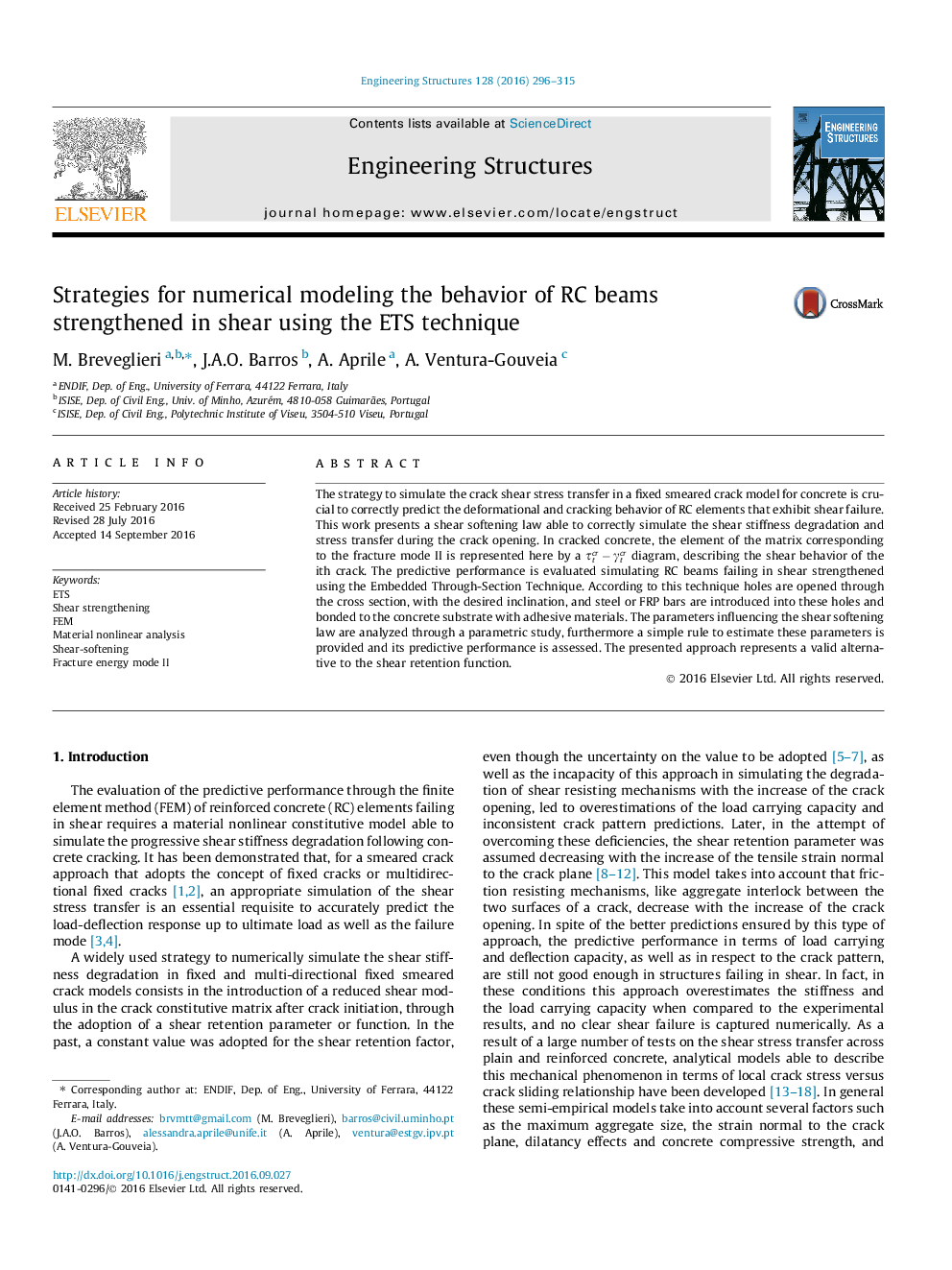| Article ID | Journal | Published Year | Pages | File Type |
|---|---|---|---|---|
| 4920728 | Engineering Structures | 2016 | 20 Pages |
Abstract
The strategy to simulate the crack shear stress transfer in a fixed smeared crack model for concrete is crucial to correctly predict the deformational and cracking behavior of RC elements that exhibit shear failure. This work presents a shear softening law able to correctly simulate the shear stiffness degradation and stress transfer during the crack opening. In cracked concrete, the element of the matrix corresponding to the fracture mode II is represented here by a Ïtcr-γtcr diagram, describing the shear behavior of the ith crack. The predictive performance is evaluated simulating RC beams failing in shear strengthened using the Embedded Through-Section Technique. According to this technique holes are opened through the cross section, with the desired inclination, and steel or FRP bars are introduced into these holes and bonded to the concrete substrate with adhesive materials. The parameters influencing the shear softening law are analyzed through a parametric study, furthermore a simple rule to estimate these parameters is provided and its predictive performance is assessed. The presented approach represents a valid alternative to the shear retention function.
Related Topics
Physical Sciences and Engineering
Earth and Planetary Sciences
Geotechnical Engineering and Engineering Geology
Authors
M. Breveglieri, J.A.O. Barros, A. Aprile, A. Ventura-Gouveia,
